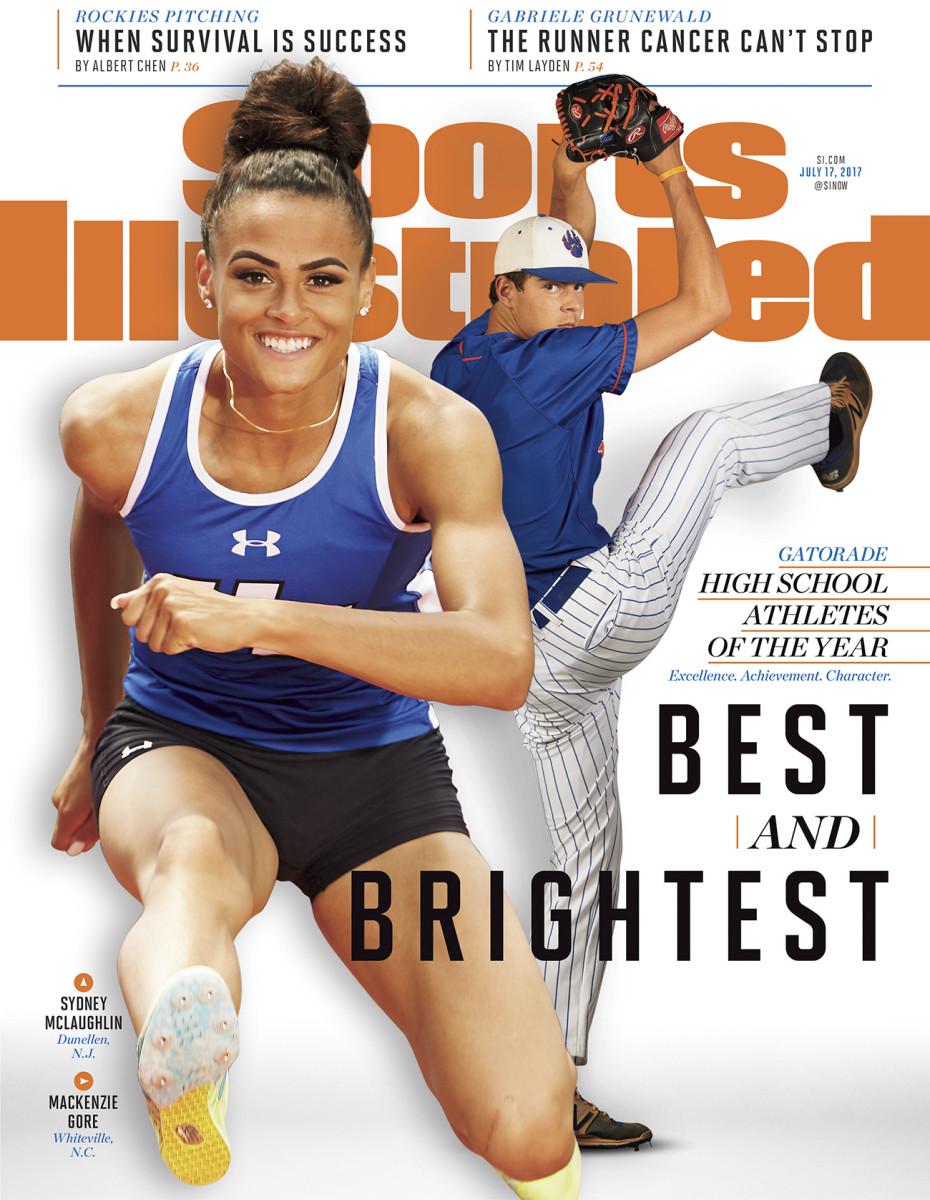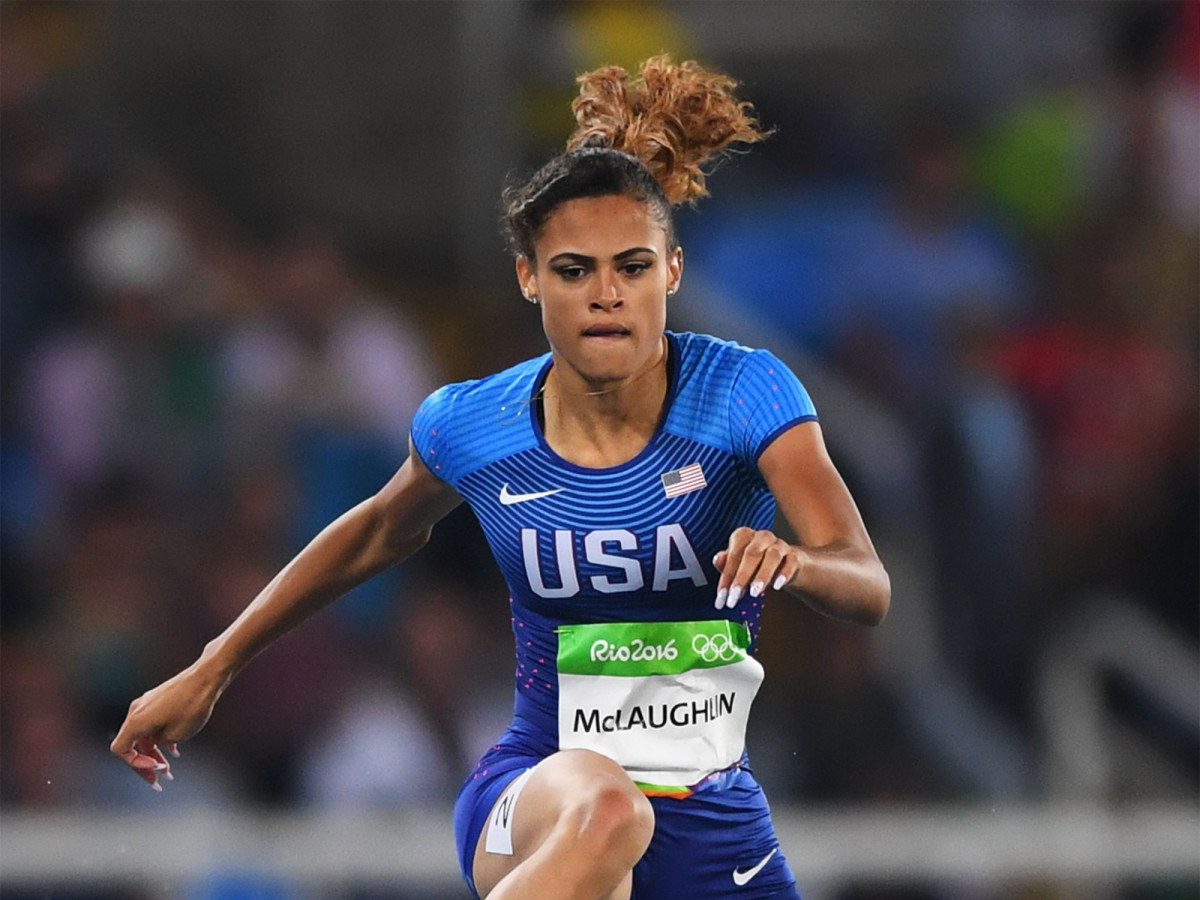Sydney McLaughlin is first repeat winner of Gatorade Athlete of the Year award

For a rare moment, Sydney McLaughlin idles. She sits on the bottom corner of a blue plastic bleacher in the gym at Union Catholic High in Scotch Plains, N.J., beneath banners commemorating her manifold athletic achievements. She slips fluffy white slides on and off her feet—a human fidget spinner, a teen lounging in an air-conditioned gym in July. During a post-high-school, pre-college summer so many of her contemporaries spend loafing, such moments of normalcy are rare for the 17-year-old McLaughlin. Two days earlier she had flown back from Sacramento, where she wrapped her track season with a sixth-place finish in the fastest-ever women’s 400-meter hurdles race, at the USA Track & Field Championships. In another five days she will make a 10-hour drive to the University of Kentucky for orientation, before jetting to Los Angeles to attend the ESPY Awards on July 12. “It’s become normal,” she says of her robust itinerary.
Such is the effect of having abnormal abilities. On her trip in late June to California, while touring San Francisco on a trolley, she was surprised by six-time Olympic gold medalist Allyson Felix, who presented her with a trophy for being Gatorade’s National Female Track & Field Athlete of the Year. That too had become routine: McLaughlin had been presented the same award by Felix a year earlier while working out after junior nationals at a high school in El Segundo, Calif. On that occasion she nearly wept, calling it “the craziest thing that’s ever happened to me” and gushing about Felix, her idol. This time she cracked a polite smile and giggled when she realized why Felix was there.
Just as it was a year ago, the track award was prelude to the larger honor of being named Gatorade’s National Female Athlete of the Year. McLaughlin is the first repeat winner in the award’s 15-year history, a distinction she earned by closing out her illustrious high school career with a sprint to the finish. On the eve of her senior year she reached the Olympic semifinals in Rio, where she became the youngest track and field athlete to compete for the U.S. since 15-year-old Cindy Gilbert high-jumped in Munich in 1972. By the fall she was on her way to claiming or lowering five national records and amassing 11 state and 12 national titles, as well as breaking her own world junior mark with a 54.03-second time in the intermediate hurdles. In January, she teamed with pros Emma Coburn, Brenda Martinez and Jenny Simpson to set a world distance medley relay record. Four months later she set a Penn Relays record with a 50.78-second anchor leg of the 4 × 400; at last month’s New Balance Nationals she topped that with a national-record 49.85 split to move her Union Catholic team from sixth to first in the final leg of the Swedish Relay, which consists of 100-, 200-, 300- and 400-meter legs. Her 400-meter hurdles time of 53.82 at the senior nationals in Sacramento would have put her just off the podium in Rio.

And so the discussion around Sydney McLaughlin is often less about her standing as the nation’s top female high school athlete this year than where she ranks among all high school athletes ever. In April, USA Today entertained the question of whether McLaughlin is the most dominant high school athlete since LeBron James. (Felix and swimmers Katie Ledecky and Missy Franklin were other top candidates.) Her success and social media savvy have birthed a young, exuberant following whose cheers often dwarf those for other Olympians at the same meet. “I’ve never seen an athlete with more obvious potential,” says one prominent track and field agent, who requested anonymity to discuss a potential client. “She just has a poise about her in these big meets that kind of exceeds her age,” says Lawrence Johnson, who coaches several Olympic medalists. “The moments aren’t too big for her. She’s shown as the stakes get higher, she’s able to meet the challenge.”
But beneath that focused veneer lies the memory that success did not always seem inevitable. A year ago, before what proved to be perhaps the biggest meet of her life, McLaughlin wasn’t sure she could run at all.
She had been there before, to storied Hayward Field in Eugene, Ore., TrackTown USA. She had even raced there. But when McLaughlin arrived at last summer’s U.S. Olympic Trials to watch a day of races before her own 400-meter hurdles, the setting had been transformed by steep sets of temporary bleachers that doubled the stadium’s capacity to 23,000, remolding the open-ended facility into an enclosed den of pressure. Even more daunting was her competition. I’m about to race the fastest women in the world, McLaughlin thought. This is terrifying. From the warmup track in the stadium’s shadow, she called her father in a panic. “I was matter-of-fact with her,” Willie says, “because I knew that once she stepped out on the track, she’d do what she had to do.”
The Gatorade High School Players of the Year who never became household names
It was little surprise to her father, then, that McLaughlin won her first two heats before finishing third in the 400‑meter hurdle final to qualify for the Olympic team. Willie had been a 400-meter runner at Manhattan College, even reaching the semifinals at the Olympic trials in 1984. He and wife, Mary—a track star at Cardinal O’Hara High in Tonawanda, N.Y.—made sure each of their four children, of which Sydney is the third, gave running a try. When the kids were in elementary school, they motivated them with this: a king-size Hershey bar, broken up and shared among them at race day’s end.
The sweet reward was encouragement to run, but the McLaughlins had no plans to raise a fleet of track autobots. Though Willie recognized his daughter’s potential quickly—(“You just knew from the first time she got on the track that she was special,” he says)—he and Mary fostered an array of interests, schlepping Sydney between soccer practices and dance lessons. Willie encouraged her to run with her arms moving forcefully—but otherwise trained her little. While she and her siblings dabbled in summer AAU track programs, they often cut their seasons short before national meets. “The goal was to get them to love the sport,” Willie says, “and not get burnt out on it.”

Only in high school did McLaughlin devote herself exclusively to track. Her older brother, Taylor, then a rising junior on his way to a 2016 junior world title in the 400‑meter hurdles and a collegiate career at Michigan, had told Union Catholic coach Mike McCabe that his sister was on another level. Within a week of preliminary workouts McCabe realized he was coaching the best female runner he’d had. In her first high school meet, at the Bishop Loughlin Games in New York City, she broke the state record in the indoor 300 meters with a time of 38.55. (She now holds the national high school record at 36.82.) “I was like, O.K., maybe, yeah, this is something I can do,” Sydney says.
Three years later she was in Rio (though not before skipping the opening ceremony to celebrate her 17th birthday with glow-in-the-dark mini golf at home in Dunellen, N.J.). Her Olympic experience raised her profile: In her first month back at Union Catholic, freshmen often stopped her for selfies, while at one meet a competitor knocked on her bathroom stall to request an autograph. Her popularity had many in the track world hoping she would turn pro; one agent estimates she could immediately earn seven figures annually. “She has everything that people are looking for,” the agent says. “Unbelievable athletic ability, a lot of charisma, a lot of personality. She’s the full package.”
Watch: Sydney McLaughlin runs fastest-ever 400m split by high schooler
First McLaughlin will head to Kentucky to work with coach Edrick Floreal, who has trained 11 Olympians and turned the Wildcats into a national power. McLaughlin says she will compete in the 100-meter hurdles and long jump, giving herself a break from the 400 hurdles. “It’s more fun having a short, fast race,” she says.
The longer races will be there for her later, as will the opportunity to go pro. “I think it’s important to be a teenager before you choose that life where it’s always work,” McLaughlin says. “I’m in no rush.”
